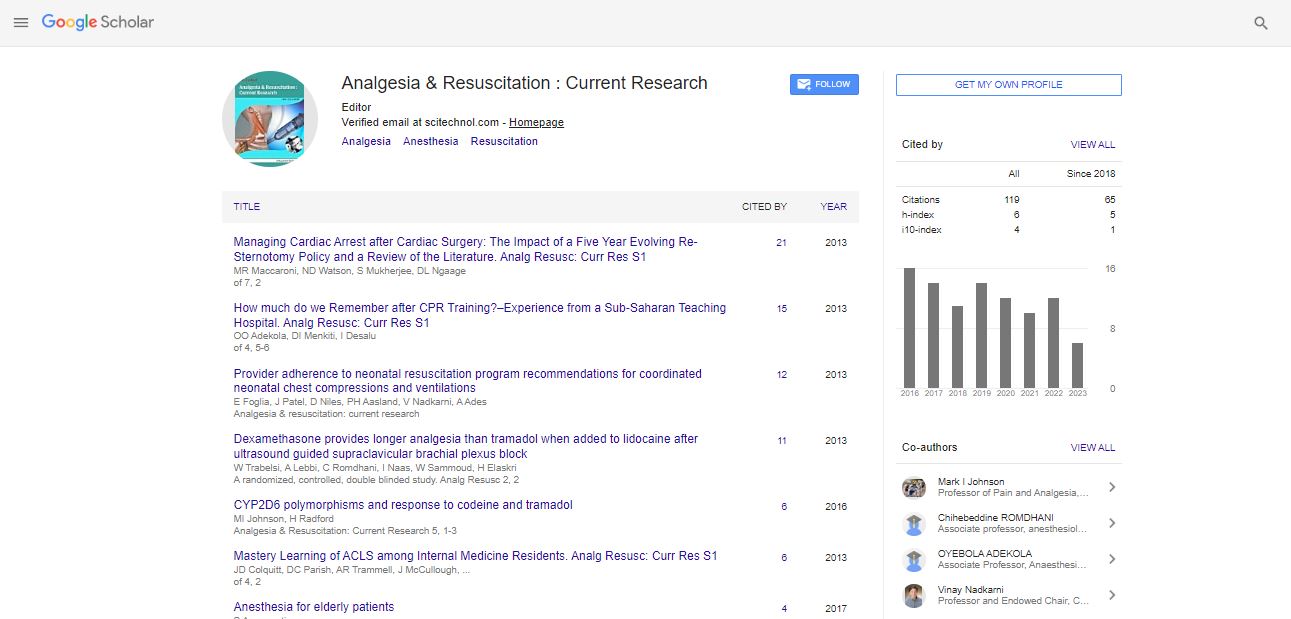Percutaneous image guided lumbar decompression
Sayed Emal Wahezi
Albert Einstein College of Medicine, USA
: Analg Resusc: Curr Res
Abstract
Lumbar spinal stenosis (LSS) is primarily a disorder of the elderly and affects 1.2 million Americans and more than 5million people worldwide. The US prevalence of affected individuals is expected to double by 2024 due to an aging population. Surgery is the most common intervention performed for LSS and epidural injections are the most common non-surgical interventions. There is published clinical efficacy of both, but each has its own limitations. Epidurals are safe, display transient efficacy, but often need to be repeated, increasing the overall cost of treatment. Surgery is not commonly repeated, but surgical management of LSS is challenging due to the highly vulnerable geriatric patient population suffering from this condition. Medical comorbidities place them into high-risk stratification for open surgeries and general anesthesia. Percutaneous image guided lumbar decompression (PILD) is a new treatment which debulks hypertrophied ligamentum flavum, which is observed in more than 90% of LSS cases. It reconciles the problems with epidurals and surgery, as it is a percutaneous procedure which modifies anatomy. PILD may be a solution to the treatment dilemma and emerges as a safe and effective option for LSS patients. Efficacy of pain and functional improvement of PILD has been demonstrated with statistically significant pain reduction and functional improvement. In this lecture I will discuss PILD patient selection, procedure performance, as well as past, present, and future research.
Biography
Sayed Emal Wahezi currently serves as an Assistant Professor at Montefiore Medical Center in New York City and is the Program Director of the ACGME accredited Interventional Pain Fellowship. He has created a fellowship with an interventional focus and multidisciplinary foundation. His mission is to create an academic environment which fosters the growth of Interventional Pain through the investigation and development of new devices and techniques. He has authored more than thirty publications in peer reviewed pain journals, book chapters, abstracts, and posters, and has presented at national meetings. He is actively involved in several basic science and clinical studies in Interventional Pain management. His basic science interests include the development of animal models for pain and physiology of neuropathic pain. His clinical research interests include innovative percutaneous pain treatments
 Spanish
Spanish  Chinese
Chinese  Russian
Russian  German
German  French
French  Japanese
Japanese  Portuguese
Portuguese  Hindi
Hindi 
